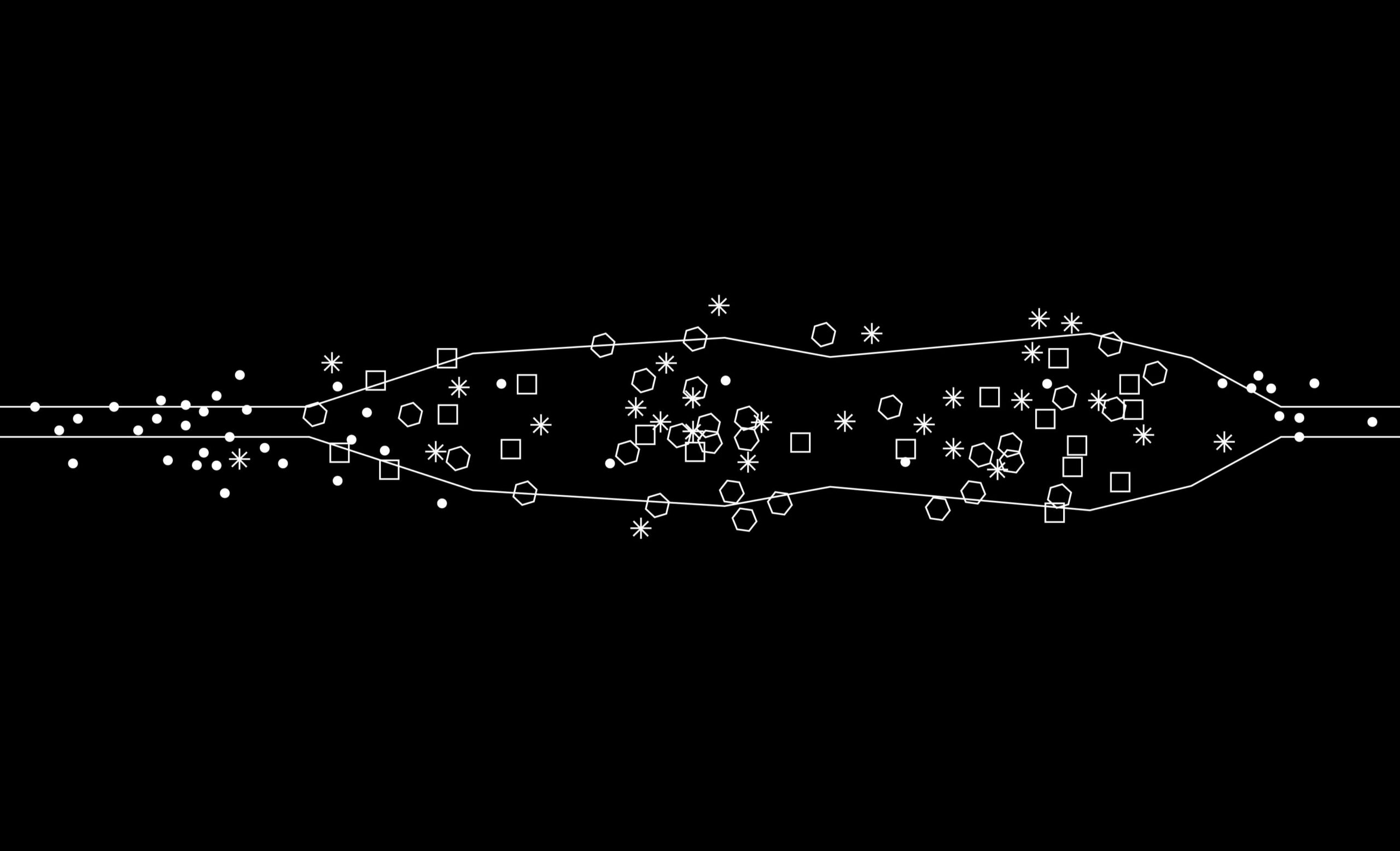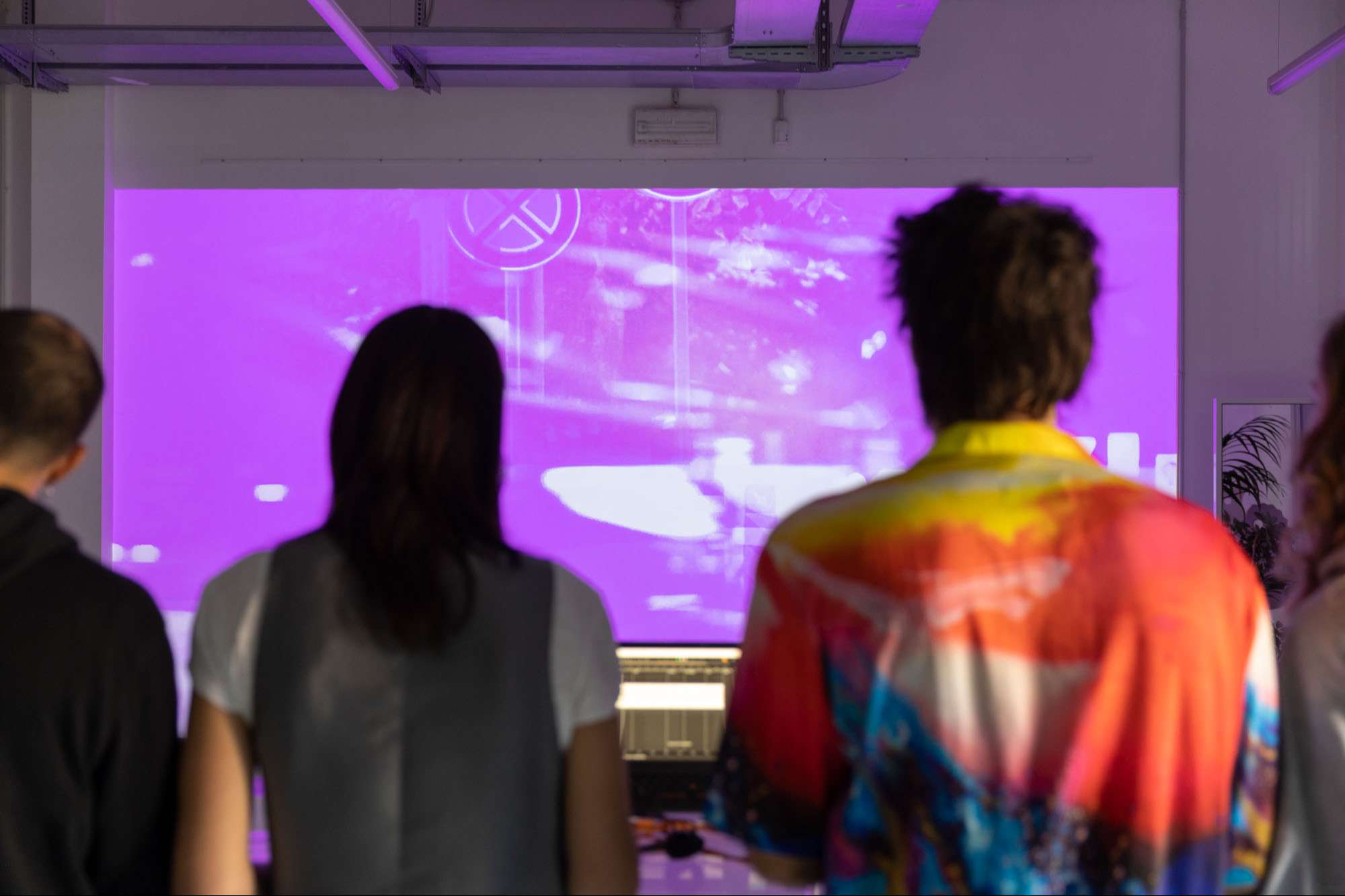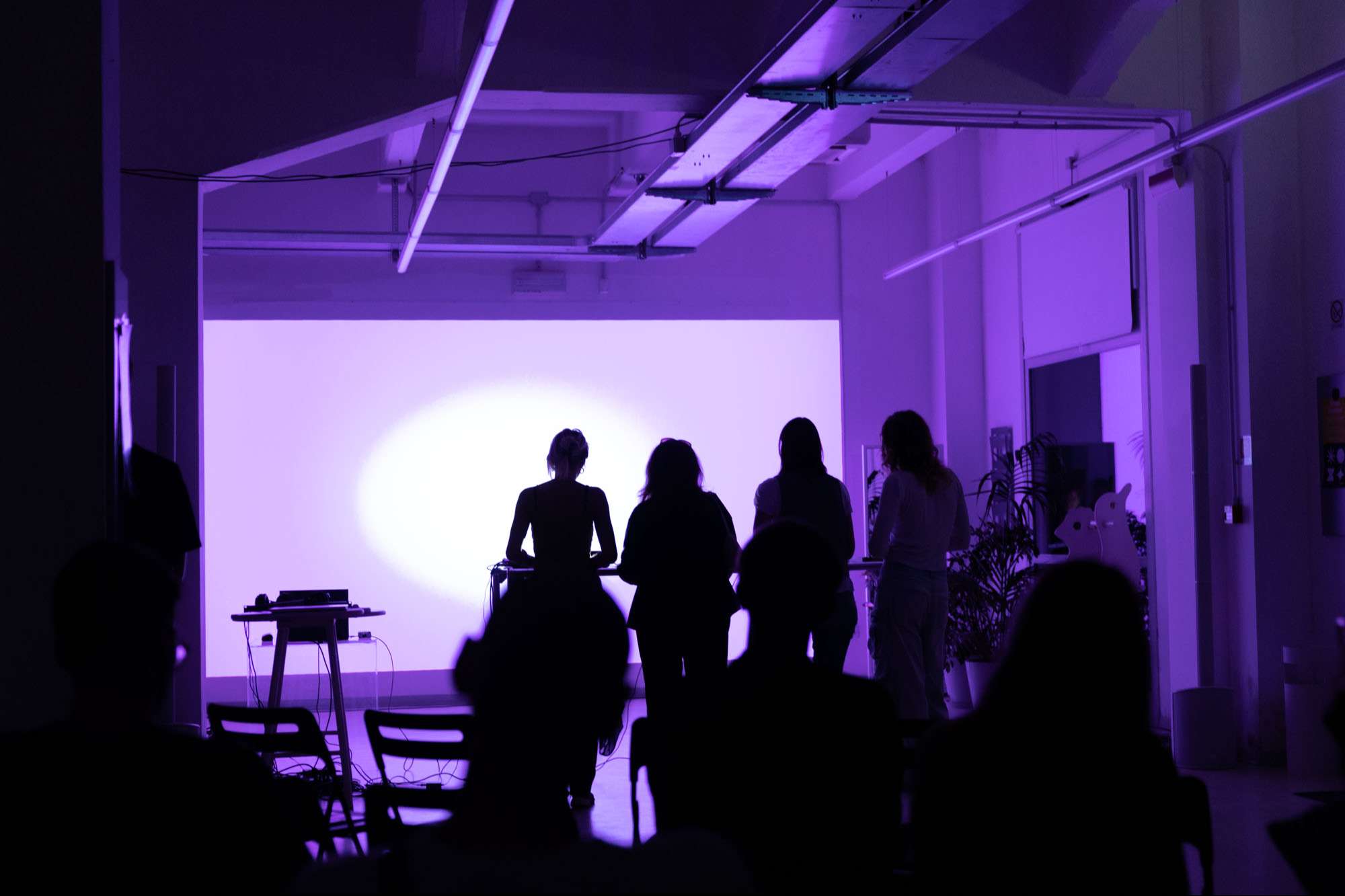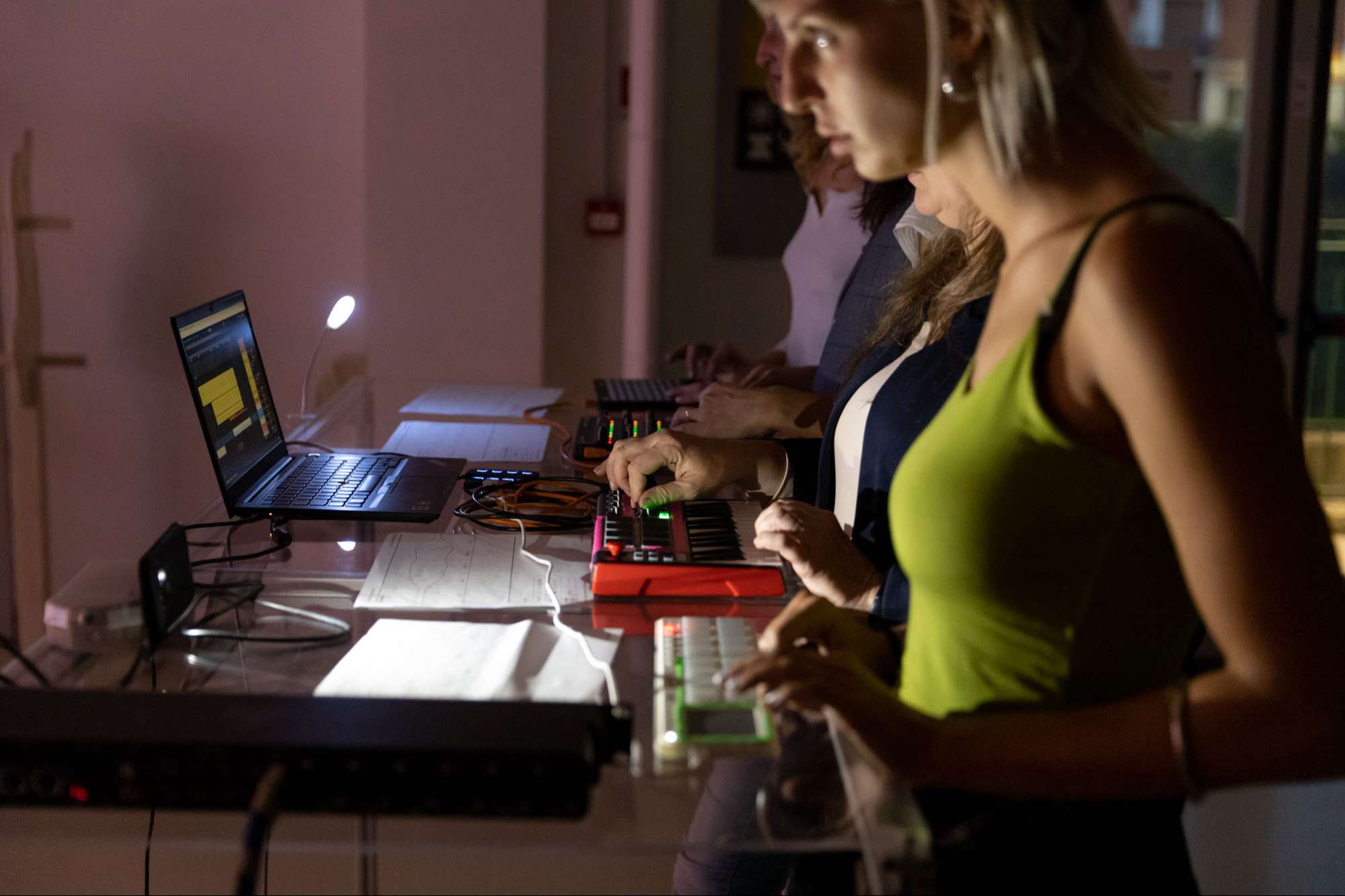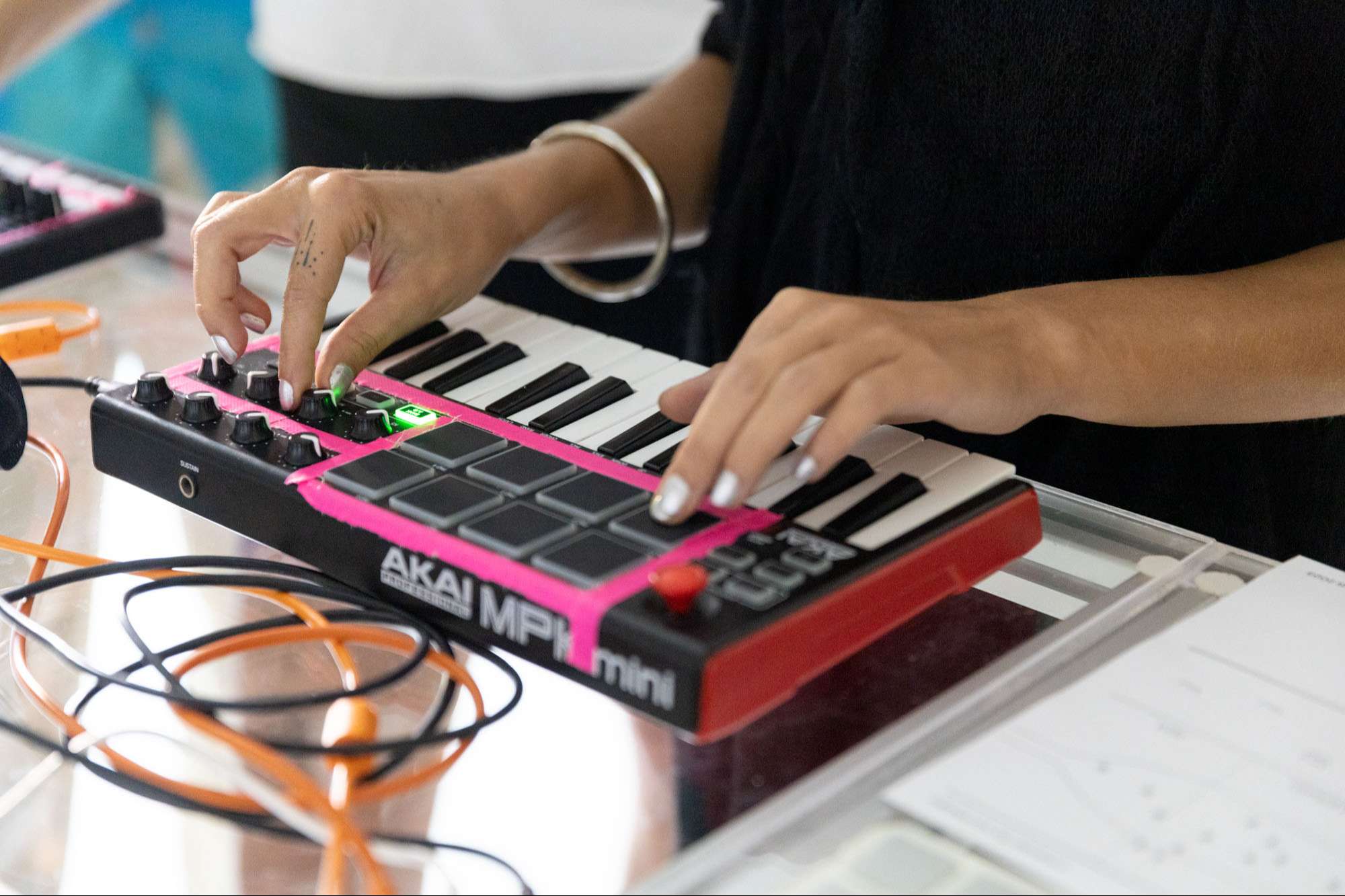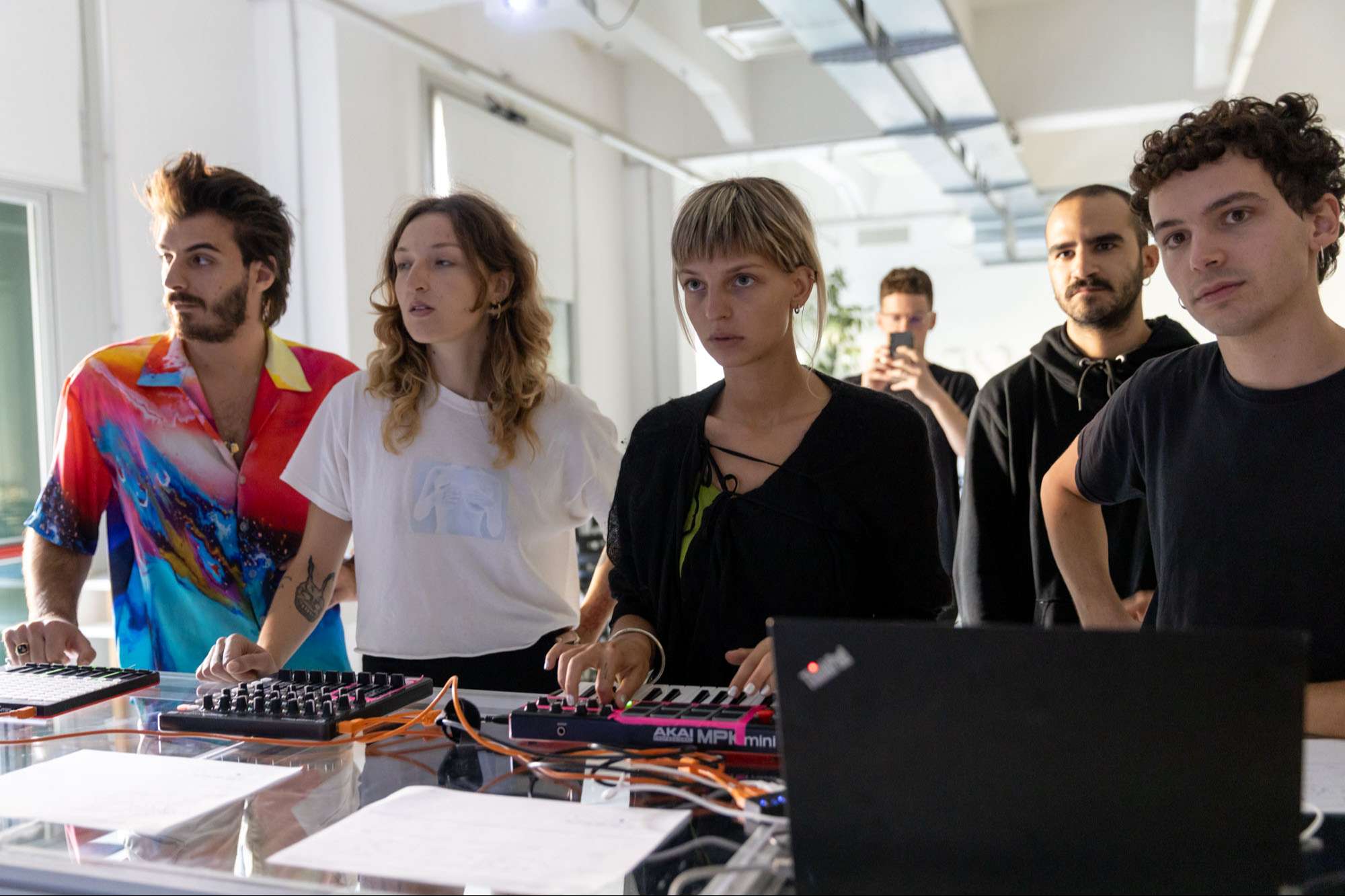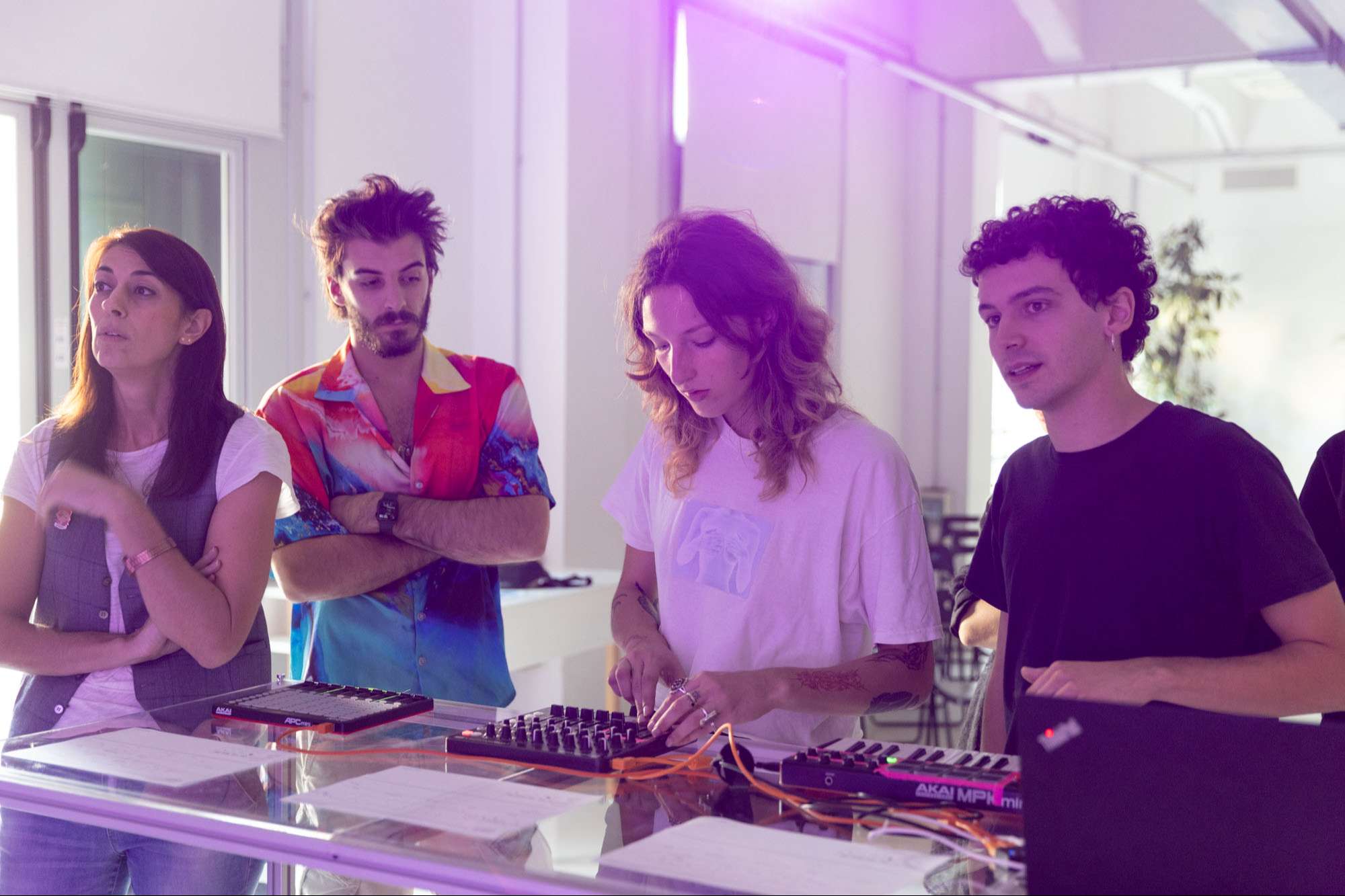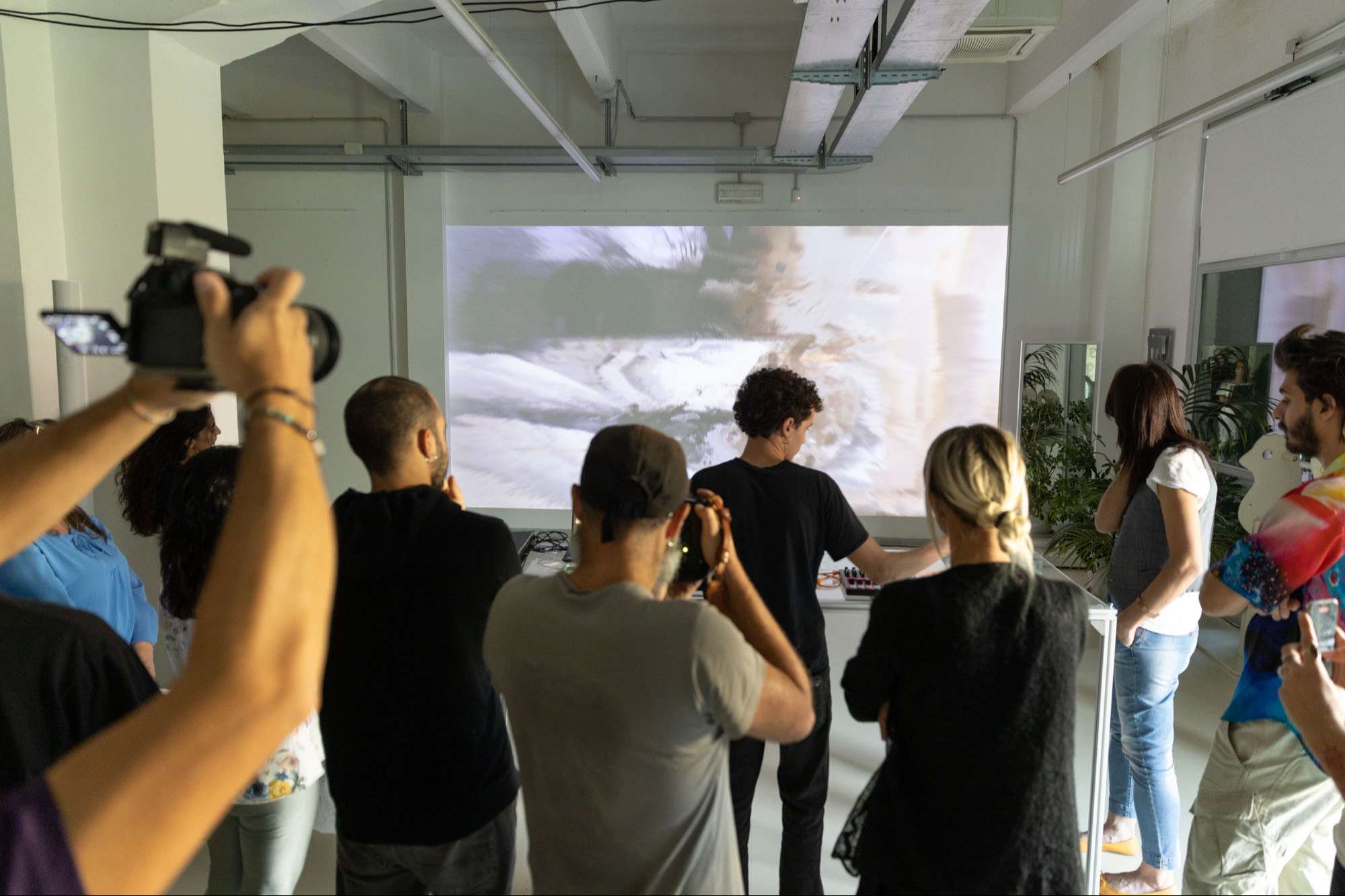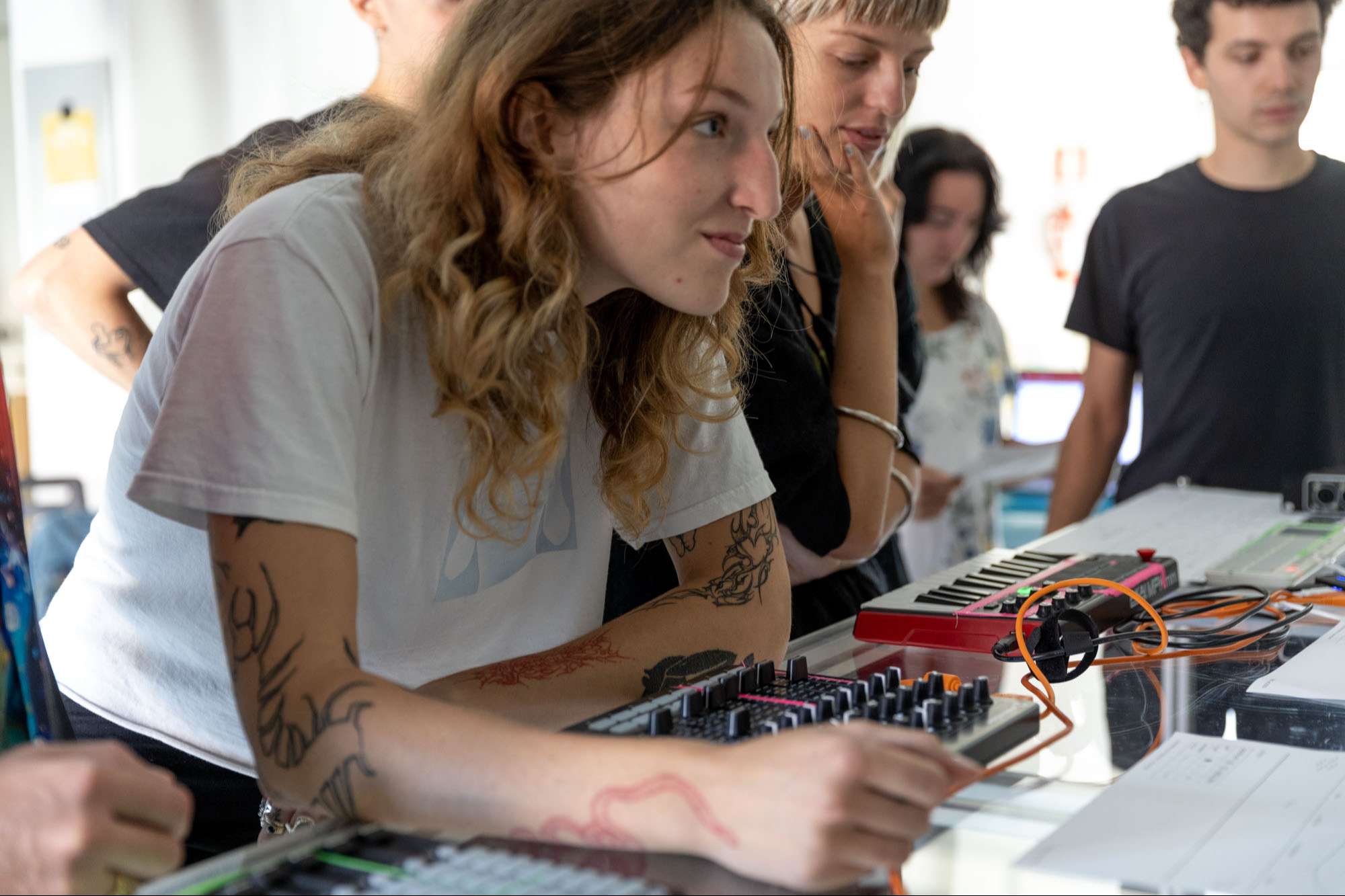Metabolic City Soundscape
Consultancy – Installation – Performance – Graphic – Video – Workshop
CLIENT
Politecnico di Milano
YEAR
2023
WHERE
Ferrara
COLLAB
Air Break Ferrara, Wunderkammer Ferrara, Comune di Ferrara
The Metabolic City Soundscape (MCS) project, conceived and realized by Plam Studio, in collaboration with Sintetico and Luca Venturini, is the result of a visual and sound performative translation of city air pollution put in relation to noise pollution.
The project was commissioned by Festa dell'Aria 2023, an event funded by UIA Air-Break Ferrara and the City of Ferrara. Curated by Basso Profilo (Leonardo Delmonte) and Politecnico di Milano - DAStU (Farah Makki) as part of the Engagement (Sound) Design Lab: Sounding the Air. Hosted and co-produced by Wunderkammer Consortium.
MCS is the result of an investigation into the issue of air and noise pollution in the context of the city of Ferrara. The research, conducted in the months preceding the workshop, identified and documented the sources responsible for the emission of pollutants and recorded the environmental noise impact related to them in a circumscribed area of the city.
The collected material was transformed into an interactive instrument, consisting of four controllers, associated with a specially created musical composition based on the air pollution data collected in that precise geographical area.
The data analyzed were derived from reading the graph from the Corso Isonzo control unit, one of 14 air quality measurement units installed by the Air Break project in the city of Ferrara.
Each control unit monitors and measures the air quality of the area, establishing a quality index and reporting its trend throughout the day in the form of a graph.
The Air-break index is a numerical value from 0 to 100 and takes into account the hourly concentration levels of 5 different pollutants: PM2.5, PM10, NO2, O3 and CO. (https://airbreakferrara.net/che-aria- pulls/)
For the MCS project, 4 pollutants were analyzed by merging PM2.5 and PM10 into one pollutant.
The implementation of the MCS project can be divided into three major operational phases. A first phase of collection, aimed at creating an audio-visual archive; a second phase of translating the material to build the soundscape; and a third phase of mapping and processing to create the visuals.
In the first collection phase, audio-visual recordings were made at 5 different times of the day that could reflect night - dawn - morning - afternoon - evening. The material was then categorized according to pollutant sources and time slot of recording.
During the workshop, conducted on Oct. 7, 2023, participants were involved in the phase of collecting one of the 5 moments of the day: the morning recordings, made at h 11:30 a.m. that day.
In the second phase, the trend of the Air-break graph was translated into sound. Taking the graph of the analyzed day, the number values of the Air-break index were transposed into MIDI (Musical Instrument Digital Interface) notes. In this way, the air pollution values, now translated into notes, became the basis for the soundscape (sound context) of the project, retracing the trend of the graph and obtaining a melodic rhythmic texture.
At this stage, a composition was created that could mirror the trend of the graph, so that workshop participants could identify the concentration of pollutants released throughout the day and invite musical playback.
The composition traces the 7-minute soundscape track, divided into 5 macro moments (night-dawn-morning-afternoon-evening).
For the third stage of sound and video mapping and processing, the collected clips were linked to the sound samples, via MIDI protocol, and the four controllers were mapped.
Each controller represents a single pollutant: PM2.5 and PM10-particulate matter, NO2-nitrogen dioxide, O3-ozone, CO-carbon monoxide.
The audio-visual performance is the result of simultaneous interaction with the four controllers.
During the workshop, participants were involved in the second and third phases. The collected audios and videos were cataloged and added to the MCS archive. After setting up the interactive tool, participants made a collective audio-visual performance.
